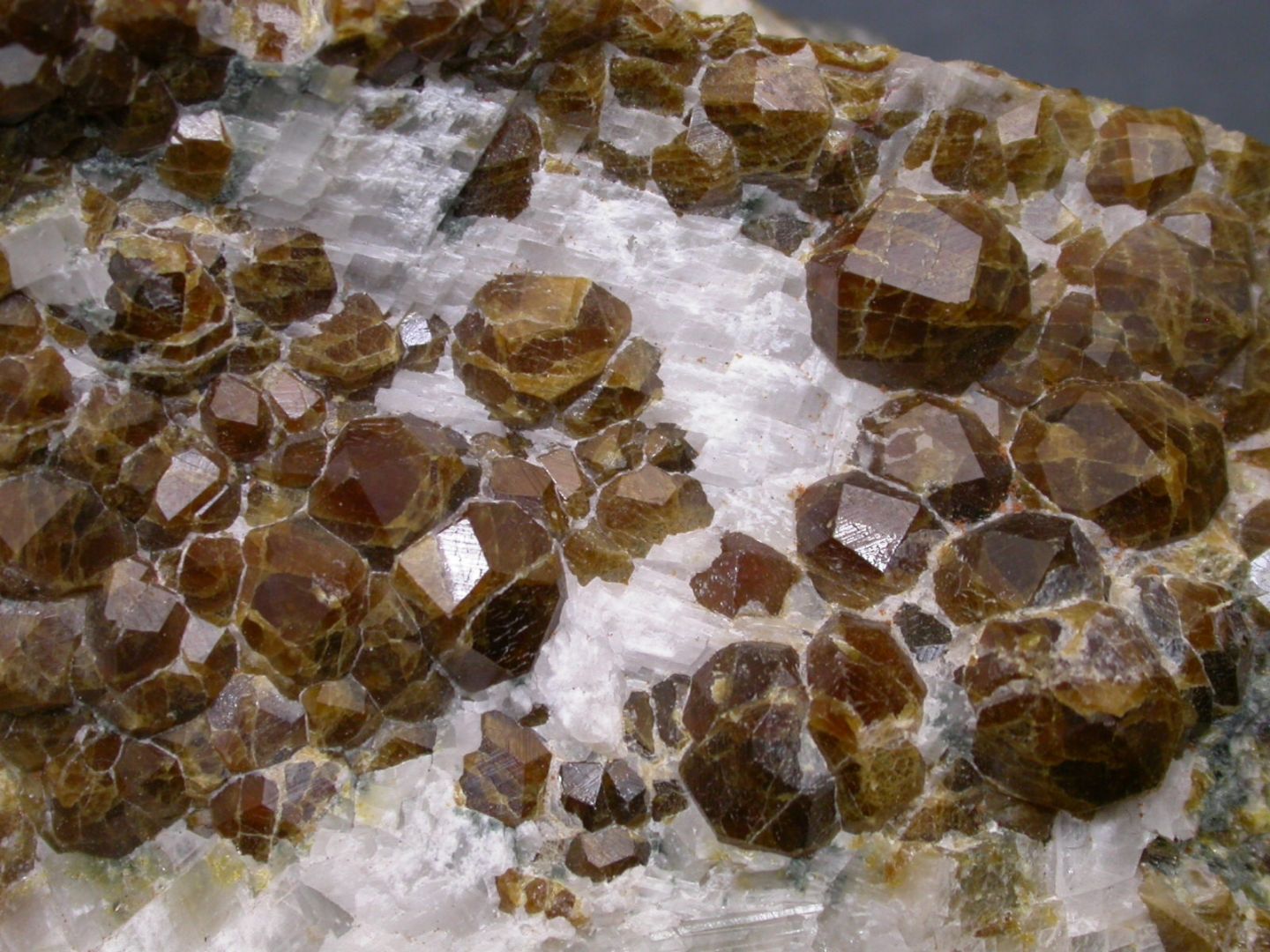At the contact of magmas and sedimentary rocks, a “mineral factory” is started. This is because the chemical composition of molten rock and sedimentary rock is very different, especially if the latter is some kind of carbonate rock, and in addition, magmas, due to their liquid state, have many mobile, easily moving components. After the magma has solidified, a thick contact zone can form in the sediment, the minerals of which are derived from their chemical components partly from the magma and partly from the sediment. In the Carpathians, the most beautiful examples of this can be found in the so-called Banat contact region, especially in the area of Ocna de Fier, Dognecea and Ciclova Montană. Here, magmatites called banatite (mainly granodiorite, but also diorite, granite, and sienite) invaded the carbonate sediments during the Cretaceous-Paleocene and thermally metamorphized them. Upon contact, rocks called scarns were formed, containing the characteristic calcium silicates (andradite, vesuvianite, wollastonite, tremolite, epidote, diopside).
In the picture: Andradite, Dognecea, Romania. Image width: 7 cm. Photo by Sándor Szakáll
